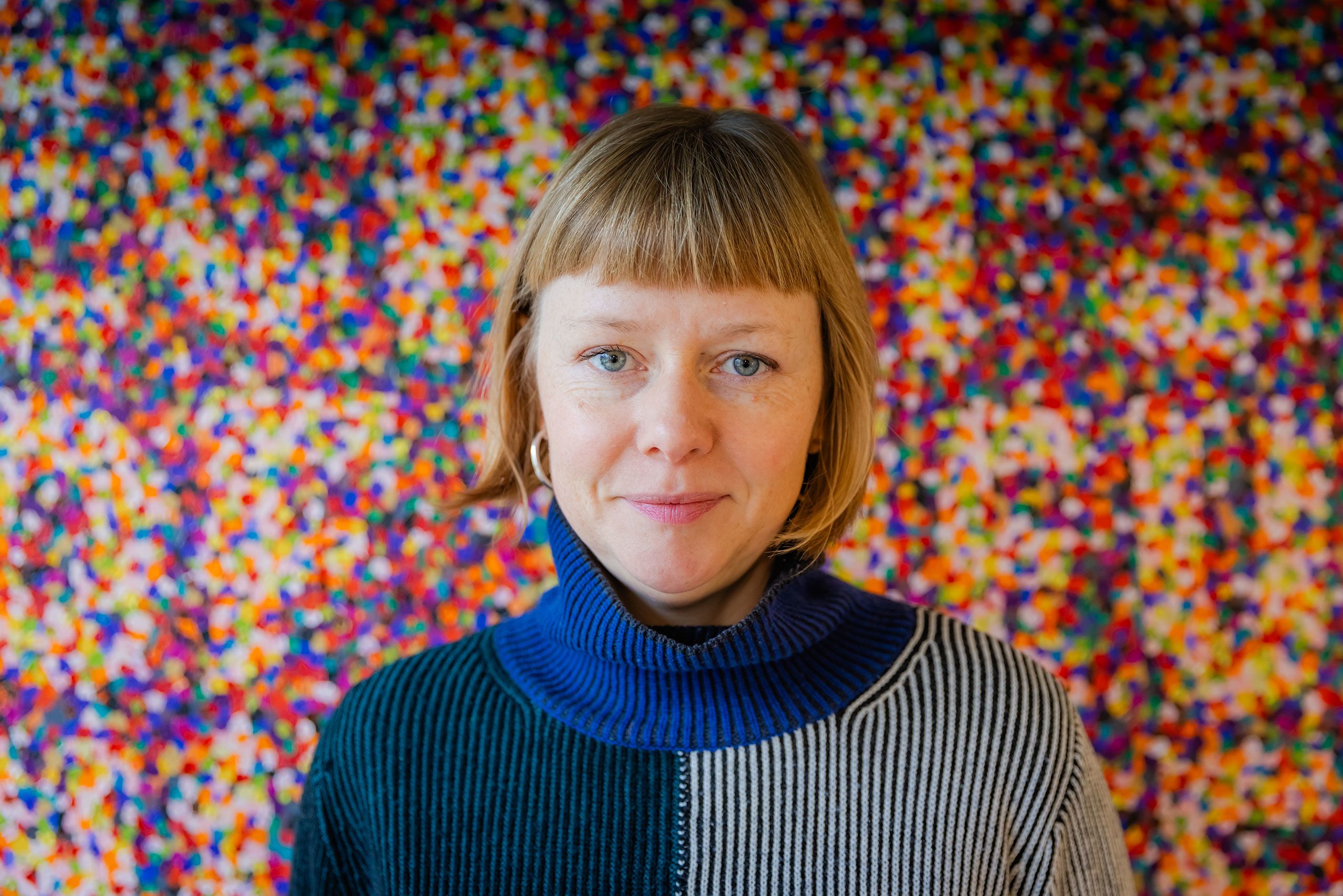This Cambridge Life
The curator reframing our experiences of art

“Art doesn’t need to be in an elaborate frame on the wall of a gallery,” says Harriet Loffler, curator of The Women’s Art Collection at Murray Edwards College. “In fact,” she says, “art in ordinary spaces can change the way we see the world.”
A key moment in my childhood was being taken by my parents to an amazing exhibition in a big warehouse in London. It changed my perspective about art – I realised that it doesn’t need to be in an elaborate frame on the wall of a gallery. I really loved the idea that art in every-day spaces can change the way we see the world.
The art at Murray Edwards College is a living, breathing collection that the student community can interact with as they study, socialise and relax. The art interacts with the College’s history, architecture and gardens, as well as its present-day ethos, values and identity as a college for women.
The story begins in the late 1980s when Mary Kelly joined the college as an artist in residence. It was a brilliant and bold appointment. At the time, the feminist artist was considered quite a notorious figure having shocked the British tabloids with her radical portrayal of motherhood – which included dirty nappies – at the Institute of Contemporary Arts.
During her time at the College – then known as New Hall – Mary Kelly created a body of work called Extase, which is part of a much bigger series called Interim that investigates women’s relationship with different aspects of life. This became the nucleus of the art collection.
A few years later, female artists were asked to donate a piece to the College. The artists then recommended other female artists in their networks to donate. And so, the collection grew. Today, we have over 600 pieces of art from early career and established artists, of all generations.
We want our collection to reflect the many different expressions of feminism. We’ve recently refined our focus to acquire and promote work that engages critically with ideas around race, representation more broadly and, specifically, gender. And we’re looking to readdress the imbalance of works by artists of colour in our collection through the acquisitions we now make.
When giving tours of the collection I often feel as much a curator of the building as the artwork because they are inextricably linked by incredible sight lines. The College itself, built by the architects Chamberlin, Powell and Bon, was designed as a manifesto for women’s education – from the iconic dome encouraging students to look up and aim high, to the library which acts as a temple to learning.
Our recent ‘Women and Water’ series was inspired by our own Fountain Court. The water brings a dynamism and fluidity which naturally flows into the artwork. When positioning artwork, it’s important to think about how it will interact with the building and College community. We want to take people on a journey and create dialogues across the spaces.
Anecdotally, many students have said that the dining room feels enlightened and that it’s refreshing to be in a space filled with art by women. Another student said that when she arrived at the College, she found the art in the accommodation blocks to be a great icebreaker for starting conversations.
I feel there are so many different entry points to the collection. It can be something that you walk past, that you engage with, that you reflect on, that you live with. But there's also an invitation to spend a lot more time with the work through our exhibitions and lively events programme.
My favourite piece in the collection is called Madonna Cascade by Rose Garrard. It recreates a self-portrait of the Dutch Golden Age painter, Judith Leyster, whose work was wrongly attributed to male contemporaries. I particularly love the sculptured frame that falls to the floor and literally takes up space – which is a great metaphor for all that Murray Edwards stands for.
The Women’s Art Collection is open to the public daily from 10am – 6pm and is free to visit.
Published 17 May 2024
With thanks to:
Harriet Loffler
Words:
Charis Goodyear
Photography:
Lloyd Mann
The text in this work is licensed under a Creative Commons Attribution 4.0 International License






